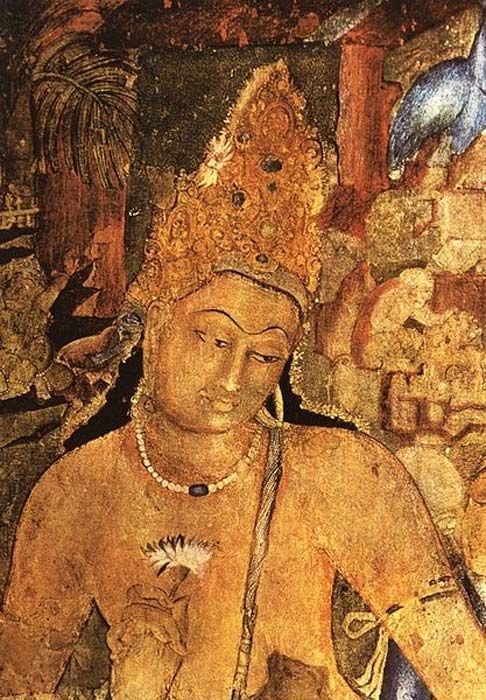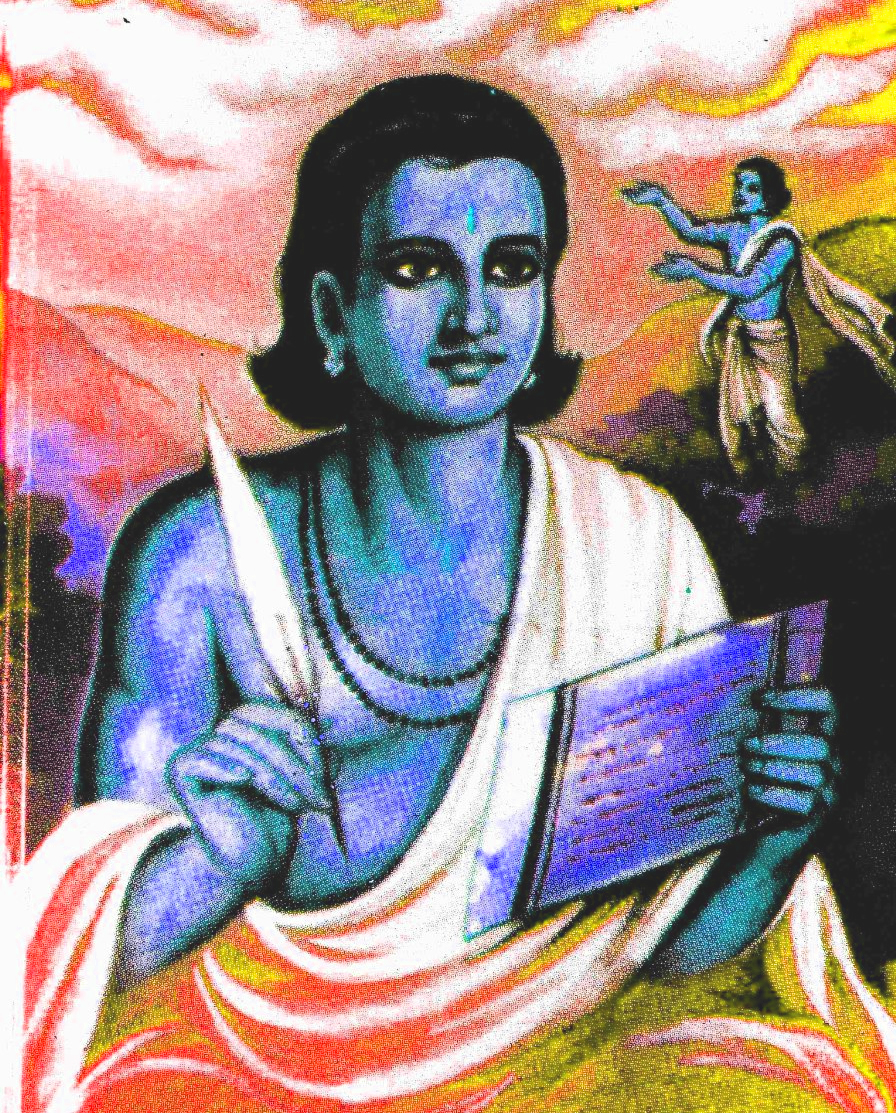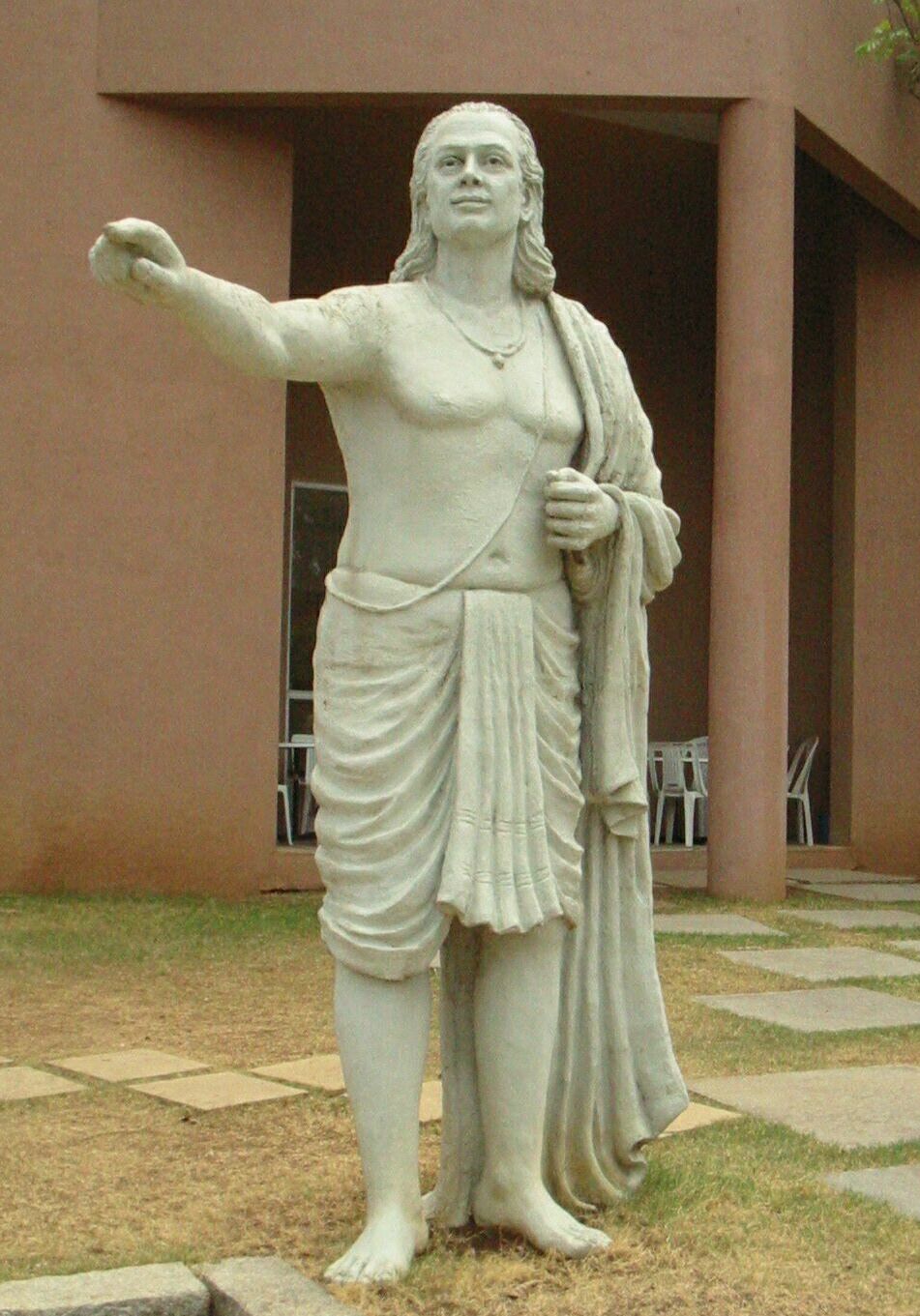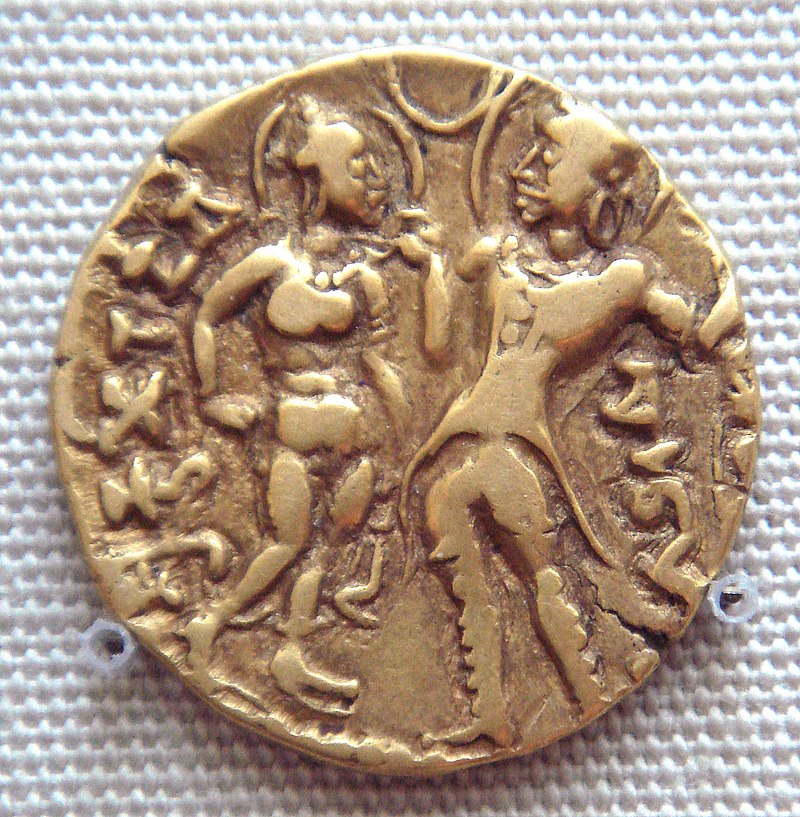The social and cultural life of this age was characterized by elements of continuity and change. While some of the essential institutions & practices continued from previous ages. At the same time number of new elements emerged in society during this period.
The family was the primary unit of society the same as before. Varna Ashrama Dharma was followed in society. But have also largely a theoretical model. The Varna Ashram regulations were not followed rigidly. As per the Varna Ashram Dharma system, Brahmana is supposed to indulging in learning & religion. But contemporary reference that Brahmanas involved in trade & commerce as well. Charudatta the hero of Mrushhakatikum was a Brahmana but he was also famous traders of age.
According to Dharmashastra trade & commerce was an Aapdharma (ceremony occasion for Brahmanas). According to Brihaspatismriti trade & commerce was a normal profession for Shudras. According to Mrushhakatikum, there were Shudras officials in Ujjain.
Kayasthas emerged as a new social group of caste during this period. Their emergence was the outcome of the practice of land grants. This was the case of the land record keeper. 1st reference of Kayasthas found in Yajnavalkya smriti.
A new form of social classification/differentiation emerged in this age on basis of the size of the house. According to Brihatsamhita of Varaha Mihir, the house of a Brahmana was to have 5 rooms, Kshatriya 4 rooms, and Vaisya 3 & Shudras 2 rooms. The status of Shudras improved significance in society during this age social outcome towards them changed quite a lot because Shudras were allowed to indulge in agriculture, arts & crafts, Trade & Commerce.
Reference of Brihaspati, Trade & Commerce normal profession of Shudras. Shudras were appointed as officials. Shudras were allowed to hear Epics & Puranas. Shudras of marriage as before new elements. According to Brihaspati, Widow’s re-marriage was not allowed but Narad Smriti allowed widow remarriage.
Child marriage was absent. The normal marriageable age for girls was 12-13 years. The status of women in society was high but some negative practices associated with women commenced during this age. According to the Upanayana ceremony (initiation ceremony for education) was not allowed for girls. The Devdasi system commenced during this age. According to Kalidas, a large number of Devdasi’s were maintained in Mahakal temple of Ujjain for the entertainment of temple deity with music & dance.
Practice of Veiling
The practice of veiling also commenced during this age. Women from a high-status family used to cover their faces while going in public. The practice of Sati was also prevalent. Earn inscription of 510 AD provides the 1st written evidence of this practice. The women enjoyed the right to Stridhana as well as share in the movable property of the father.
While Narada allows women rights to Stridhana Katyayana (smriti) allowed women to share in both movable as well as immovable property of the father. Prostitution was also prevalent in society Vatsyayana prostitution was trained professionally in music & dance. Slavery was prevalent in society. According to Narad Smriti, there were 15 types of slaves.
Untouchability was prevalent. In fact, this practice had expanded when compared with the previous period. Untouchable was categorized into two types Nirvasita (excluded) & Anirvasita (non-excluded). Nirvasita included in an unclean profession such as the lifting of dead animal & cleaning of drainage. They used to live outside the village/town.
Fahian wrote that Chandalas used to live on the outskirts of the city. They used to make sound by hitting a log of wood on the ground to warm others to get aside to avoid pollution. Nalanda University was founded by King Kumar Gupta I. It was the world-famous center of Buddhist learning. Taxila University had continued. Banaras was a famous center of medical science. Sushruta was a famous teacher at Banaras (Sushruta Samhita). Guilds & Gurukulas also continued.
Social Developments
Land grants to the Brahmana on a large scale suggest that the Brahmana supremacy continued in Gupta times. The term dvija was now beginning to be used increasingly for the Brahmana. The greater the emphasis on Brahmana purity the greater was the stress laid on the impurity of the outcaste. The Varna system seems to have been considerably modified owing to the proliferation of castes.
The Kshatriya caste swelled up with the influx of the Hunas and subsequently of the Gurjars who joined their ranks as Rajputs. The increase in the number of Shudra castes and untouchables was largely due to the absorption of backward forest tribes into the settled Varna society. Often guilds of craftsmen were transformed into castes.
It has been suggested that transfers of lands or land revenues gave rise to a new caste, that of the Kayastha (scribes) who undermined the monopoly of the Brahmana as scribes. The position of the Shudras improved in this period and they were now permitted to listen to the epics and the Puranas. They were also allowed to perform certain domestic rites which naturally brought fee to the priests.
All this can be attributed to a change in the economic status of the Shudras. The practice of untouchability became more intense than in the earlier period. Penance was provided to remove the sin arising out of touching a chandala. Fa-Hien informs us that the chandala, entering the gate of a city or market place, would strike a piece of wood to give prior notice of his arrival so that men could avoid him.
The Varna system did not always function smoothly. The Shanti Parva of the Mahabharata, which may be assigned to the Gupta period, contains at least nine verses that stress the need for combination of the Brahmanas and the Kshatriyas; these may indicate some kind of concerted opposition from the vaishyas and Shudras.
The Anushashana Parva of the Mahabharata represents the Shudras as a destroyer of the king. Most of the legal texts of the period took the Dharmashastra of Manu as their basis and elaborated upon it. Several such works were written during this period, the best know being those of Yajnavalkya, Narada, Brihaspati, and Katyayana. The joint family system, which became an essential feature of Hindu caste-society, was prevalent at the time.
Status of Women
The status of women continued to decline. In a patriarchal set-up, the men began to treat women as items of property, so much so that a woman was expected to follow her husband to the next world. The practice of sati (self-immolation at the funeral pyre of the husband) gained the approval of the jurists.
But it seems to have been confined to the upper classes. The first memorial is found at Eran in Madhya Pradesh. Lawgivers of the period almost unanimously advocated early marriage; some of them preferred even pre-puberty marriage. Celibacy was to be strictly observed by widows. Women were denied any right to the property except for stridhana in the form of jewelry, garments, and similar other presents made to the bride on the occasion of her marriage.
They were not entitled to formal education. In the Gupta period, like Shudras, women were also allowed to listen to epics and the Puranas and advised to worship Krishna. But women of higher orders did not have access to independent sources of livelihood in pre-Gupta and Gupta times. The fact that women of the two lower varnas were free to earn their livelihood gave them considerable freedom, which was denied to women of the upper varnas.
Culture of the Gupta Age
The Gupta period is called the Golden Age of ancient India. This may not be true in the political and socio-economic fields because of several unhappy developments during the period. However, it is evident from the archaeological findings that the Guptas possessed a large amount of gold, whatever might be its source, and they issued the largest number of gold coins.
Princes and richer people could divert a part of their income for the support of those engaged in art and literature. Both Samudragupta and Chandragupta II were patrons of art and literature. Samudragupta is represented on his coins playing the lute (veena) and Chandragupta II is credited with maintaining in his court nine luminaries or great scholars. The Gupta period witnessed the Golden Age only in the fields of art, literature, etc.
Paintings

The art of painting reached its height of glory and splendor in this age. The most important examples of the Gupta paintings are to be found on the wall frescos of the Ajanta caves, the Bagh caves. The Gupta painters also painted incidents from the life of Buddha during the Gupta period. Cave No. XVI at Ajanta has the scene known as “Dying Princess”. Cave no. XVII has been called a picture gallery. At Ajanta, other prominent cave paintings are cave no. XIX, I, and II.
Gupta Literature

Sanskrit language and literature after centuries of evolution, through lavish royal patronage, reached to the level of classical excellence. Sanskrit was the court language of the Guptas. The Puranas had existed much before the time of the Guptas in the form of bardic literature; in the Gupta age, they were finally compiled and given their present form.
The period also saw the compilation of various Smritis or the law-books written in verse. The Smritis of Yajnavalkya, Narada, Katyayana, and Brihaspati was written during this period. The two great epics namely the Ramayana and the Mahabharata were almost completed by the 4th century A.D.
The Gupta period is remarkable for the production of secular literature. Among the known Sanskrit poets of the period, the greatest name is that of Kalidasa who lived in the court of Chandragupta II. The most important works of Kalidasa were the Abhijnanashakuntalam (considered to be one of the best hundred literary works in the world) Ritusamhara, Malavikagnimitra, Kumarasambhava, Meghaduta, Raghuvamsha and Vikrama Urvashiyam. Shudraka wrote the drama Mrichcbhakatika or the little Clay cart.
Vishakadatta is the author of the Mudrarakshasa, which deals with the schemes of the shrewd Chanakya. The Devichandraguptam another drama written by him has survived only in fragments.
The Gupta period also saw the development of Sanskrit grammar based on Panini and Patanjali. This period is particularly memorable for the compilation of the Amarakosha by Amarasimha, who was a luminary in the court of Chandragupta II. A Buddhist scholar from Bengal, Chandragomia, composed a book on grammar, named Chandravyakaranam.
Buddhist and Jaina literature in Sanskrit was also written during the Gupta period Buddhist scholars Arya Deva, Arya Asanga, and Vasubandhu of the Gupta period were the most notable writers. Siddhasena Divakara laid the foundation of logic among the Jainas. The Gupta age witnessed the evolution of many Prakrit forms such as Suraseni used in Mathura and its vicinity, Ardhamagadhi has spoken in Oudh and Bundelkhand, Magadhi in Bihar and Maharashtra in Berar.
Science and Technology
Aryabhatta was the first astronomer to pose the more fundamental problems of astronomy in A.D. 499. It was largely through his efforts that astronomy was recognized as a separate discipline from mathematics. He calculated pi (π) to 3.1416 and the length of the solar year to 365.3586805 days, both remarkably close to recent estimates.

He believed that the earth was a sphere and rotated on its axis and that the shadow of the earth falling on the moon caused eclipses. He is also the author of Aryabhattiyam, which deals with algebra, arithmetic, and geometry. Varahamihira, who lived towards the end of the fifth century wrote several treatises on astronomy and horoscopy. His Panchasiddhantika deals with five schools of astronomy, two of these reflect a close knowledge of Greek astronomy. The Laghu-Jataka, BrihatJataka, and Brihat Samhita are some of his other important works.
Hastayurveda or veterinary science, authored by Palakalpya attests to the advances made in medical science during the Gupta period. The Navanitakam, a medical work, which is a manual of recipes, formula, and prescriptions, was compiled during this period.
Gupta’s Coins

Coins contain the names of King and the dates. This information helped in fixing the chronology of the Gupta dynasty. In fact, the time period of Gupta rulers as known today is based on the date found on the coins. Coins contain the title of a king-like “Maharajadhiraja” (King of King) and “Vikramaditya). A title adopted by those Indian rulers. These titles revealed the status & strength of Gupta rulers.
Coins through light on foreign relations of Gupta rulers. Lichahhvi princess Kumardevi is depicted on the coins issued by Chandragupta 1. This implies Chandragupta-1 established matrimonial relation with Lichahhvis & the depiction of the Lichahhvis princess on Gupta coin revealed the significance of this relationship.

Coins issued by Samudra Gupta contain the term Lichachhavidauhitra (Son & daughter of Lichahhvi). This also proved Gupta relation with the Lichahhvi dynasty. Ashwamedha coins issued by Samudra Gupta indicate that he was a great military conqueror. Tiger slayer type of coins issued by Samudra Gupta indicated that he conquered East India tigers found in the forest of East India only at that time.
Social and religious life depicted from Coins
The depiction of Kumardevi on coins indicates that the status of women was high during Gupta’s age. The title of “Parambhagvata” found on coins issued by Chandragupta II indicates that he was a follower of Vaishnavism. “Garuda” was the royal emblem of Guptas as revealed by the Garuda emblem found on the coin. This indicates Gupta rulers are followers of Vaishnavism.
Depiction of Goddess Durga riding-lions of Chandragupta I indicate that Shakti worship was practiced. Peacock was the royal emblem of Kumar Gupta I as revealed by his coins. This indicates that he was a worshiper of Kartikeya. Ashwamedha type coins issued by Samudra Gupta indicate that Brahmanical sacrifices were performed by Gupta rulers. Cultural life is revealed by coins. Samudragupta was depicted while playing the veena. Because of different symbols are found on coins. The script of the Gupta period can also be understood on basis of coins because different titles & names are written on coins.
Economic life as revealed by Coins
The metals used in making of coins through light on knowledge of metals & metallurgy. The purity of coins issued by early Gupta rulers indicates that level of prosperity was high & reduction of purity of coins issued by Kumar Gupta I & successor indicate that economy had started declining.
Most gold coins having found in hoards (in number of coins together). This indicates that gold coins were used for the accumulation of wealth. Gold coins discovered so far are from town & cities, very few coins found from villages this indicates that gold coins were not used in villages on a significant scale.
Gold coins were high-value coins so it was useful only for big merchants & traders. It could use only in large transactions. According to Fahiyan metal powder (Churni) & shells (Cauri) were used as a medium of exchange by common people during the Gupta age.
Land revenue was paid as a peasant in kind. This reference suggested that level of monetization of economics was quite low in villages and coins were not of much significance in the life of the common masses. The paucity of coins belonging to the reign of later Gupta rulers (post-Skanda Gupta) indicates that trade & commerce in declining conditions.

